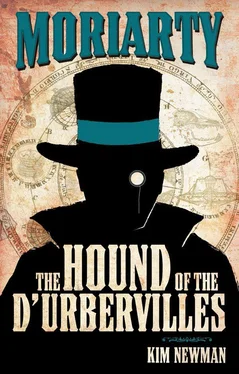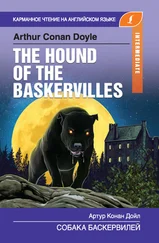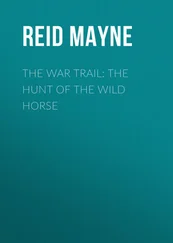Kim Newman - Professor Moriarty The Hound of the D'Urbervilles
Здесь есть возможность читать онлайн «Kim Newman - Professor Moriarty The Hound of the D'Urbervilles» весь текст электронной книги совершенно бесплатно (целиком полную версию без сокращений). В некоторых случаях можно слушать аудио, скачать через торрент в формате fb2 и присутствует краткое содержание. Жанр: Исторический детектив, на английском языке. Описание произведения, (предисловие) а так же отзывы посетителей доступны на портале библиотеки ЛибКат.
- Название:Professor Moriarty The Hound of the D'Urbervilles
- Автор:
- Жанр:
- Год:неизвестен
- ISBN:нет данных
- Рейтинг книги:5 / 5. Голосов: 1
-
Избранное:Добавить в избранное
- Отзывы:
-
Ваша оценка:
- 100
- 1
- 2
- 3
- 4
- 5
Professor Moriarty The Hound of the D'Urbervilles: краткое содержание, описание и аннотация
Предлагаем к чтению аннотацию, описание, краткое содержание или предисловие (зависит от того, что написал сам автор книги «Professor Moriarty The Hound of the D'Urbervilles»). Если вы не нашли необходимую информацию о книге — напишите в комментариях, мы постараемся отыскать её.
Professor Moriarty The Hound of the D'Urbervilles — читать онлайн бесплатно полную книгу (весь текст) целиком
Ниже представлен текст книги, разбитый по страницам. Система сохранения места последней прочитанной страницы, позволяет с удобством читать онлайн бесплатно книгу «Professor Moriarty The Hound of the D'Urbervilles», без необходимости каждый раз заново искать на чём Вы остановились. Поставьте закладку, и сможете в любой момент перейти на страницу, на которой закончили чтение.
Интервал:
Закладка:
See: John Watson and Arthur Conan Doyle, ‘The Final Problem’, The Strand Magazine, 1893; and ‘The Adventure of the Empty House’, Collier’s Weekly, 1903. It is evident that Moran wrote his memoir after both these reminiscences — which offer differing accounts of the incident at Reichenbach Falls — were published. In ‘The Final Problem’, the narrator writes that ‘the best and wisest man I have ever known’ died at the Falls; in ‘The Empty House’, it is alleged that Watson’s friend survived but, for reasons no else has ever found convincing, decided to let the world think him dead for a few years. Moran barely touches on the many other theories which have been advanced as to what actually happened… that Moriarty was merely an alternate personality of a mentally ill man who threw himself alone off the mountain… that Moriarty survived to take his dead opponent’s place in the world, and thereafter fought against crime as he had previously fought for it… that Moriarty evaded death by mentally projecting himself into a succession of other bodies and has lived on as a series of masterminds; the names of Carl Peterson, Gregory Arkadin, Alexander Luthor, Arnold Zeck, Professor Marcus, Peter Cornelius, Ernst Blofeld, Justin Sepheran, Derek Leech, Hannibal Lecter and ‘Count Jim Moriarty’ have been mentioned — and some of those aren’t even real people… that Moriarty was never in Switzerland and faked his death so he could rebuild his just-shattered criminal empire. He also reveals nothing which will comfort the many theorists who have advanced the notions that Moriarty was a total innocent persecuted by a paranoid cocaine fiend, an alien invader (this might arise from dim rumours associated with The Red Planet League), a vampire, one of his brothers in disguise, a multiple personality (in this scenario, the Professor, the Colonel and the Stationmaster are aspects of the same person), a self-aware hologram, a giant rat (either from Sumatra or somewhere else), a woman, a clone from the future, gay, or (like every eminent Victorian from Alfred Tennyson to Vesta Tilley) Jack the Ripper. It’s unlikely that Moran was blithely unaware of this feverish speculation, which was well underway during his later life.
47
As the author of Katie Reed: A Turbulent Life (Virago, 1988), I am satisfied that Moran here solves a significant mystery about the identity of the person with whom the feminist writer attempted collaboration in the summer of 1891. At some point, she — or another party — went through her journals and filleted the pages which cover this thorny business. We only know she was working as a ghost from the letters of her friend (and, later, lover) Charles Beauregard — to whom she complained extensively about her collaborator’s ‘uselessness, unreliability and octopus hands’. The assignment was thrust on Katharine Reed by Edward Tyas Cook, editor of the Pall Mall Gazette, on the still-commonplace principle of ‘do one for me now and I’ll give you something you want to do later’. Since 1988, a great deal of material about Reed — one of the most interesting women of the late nineteenth and early twentieth centuries — has come to light. It’s my hope that an enlightened publisher will eventually enable me to issue a comprehensively revised edition of my biography. Paul Forrestier’s What Kate Reed Did (University of Brighton Press, 2003) and Kim Newman’s ‘The Gypsies in the Wood’ (The Fair Folk, SFBC, 2005) are, respectively, inadequate and fanciful.
48
This would seem to refer to William Houlston (1882–1973). It took seven months of enquiries to find out which government departments presently fulfil the functions of the nineteenth-century Department of Supplies and the Diogenes Club. A D-notice prevents me from revealing even their current acronyms, though I have been given special leave to say that the Diogenes Club traded as Universal Exports in the 1950s which — at this stage of paranoia — inclines me to question whether this is true. Needless to say, attempts to ascertain whether either hold a bundle of red-taped documents marked ‘Sealed until 2073’ — let alone requests for premature access on academic grounds — have been unrewarding. A minor puzzle arises: if the exchanges were secret, how did Moran know they were ‘cryptic, terse, bitter’? Had he read them?
49
See: John Watson and Arthur Conan Doyle, ‘The Greek Interpreter’, The Strand Magazine, 1893.
50
Both Kemp’s employers subsequently came to bad ends. See: John Watson and Arthur Conan Doyle, ‘The Adventure of Charles Augustus Milverton’, Colliers Magazine, 1904; and Harold Manders and E.W. Hornung, Mr Justice Raffles, Smith, Elder & Co, 1909. From the records of Box Brothers, where Charles Milverton and Daniel Levy both banked, it is evident that the master blackmailer and the rapacious moneylender tithed significant portions of their incomes to the Professor. He allowed them to conduct their businesses, and his influence granted them a measure of protection. While Moriarty was alive, no one murdered Milverton or Levy; when he was off the scene, ruined former victims queued up to take their shots. Neither case was solved and the murderers went free. Milverton, Levy and other criminal or semi-criminal figures ran their particular rackets only because Professor Moriarty didn’t find such enterprises stimulating or useful, unless for a specific purpose connected to larger schemes. Indeed, it is quite likely Moriarty used his pet blackmailer and usurer to ensnare or pressure officials or members of society he wished to make use of.
51
Quap is a form of pitchblende (uranium-rich sludge) found in some quarters of Africa. Around the turn of the century it was reportedly used in patent medicines. Since there are no recorded cases of patients succumbing to radiation poisoning, it’s unlikely that tonics which claimed to derive from quap contained any. What Baron Maupertuis — who was reputed to have ‘colossal schemes’ — intended is unknown, but he met Henri Becquerel, the discoverer of radioactivity, in Paris in 1885 and is mentioned obliquely in Madame Curie’s journals. Little is known about Maupertuis beyond his involvement in the Netherland-Sumatra Company, which failed in 1887.
52
The incident of the white tiger is not recounted in either of Moran’s published books about his big-game hunting experiences. Curiously, of all the animals (and men) he shot, he seems to have held this kill sacred… and touches on it only in these unguarded pages. Uncertain about the passage, he experimented with a false name (Jammyfoot) to conceal the identity of his hunting companion before setting down the real one. Matthew Jellinek (1842–1975) is not mentioned at any other point in the papers, though Three Weeks in the Jungle is perhaps significantly dedicated to ‘the tethered kid’. Jellinek was in Farrer House with Moran at Eton, then served with him in the Bangalore Pioneers. The archives of the Pioneers contain a report by Colonel Henry Patience, commanding officer during the regiment’s secondment to Abyssinia for the 1868 punitive expedition. Addressing a sentiment that then-Major Sebastian Moran should be ‘mentioned in despatches’, Patience explains that Moran effected a single-handed rescue of then-Lieutenant Jellinek from an irregular force loyal to Emperor Tewodros II (they would now be called a ‘Death Squad’) known for torturing Englishmen to death. Patience notes this ‘jape’ proved popular in the officers’ mess and made the young Major ‘cut a dash as a hero to the men’, but was executed against direct orders and constituted ‘a serious breach of discipline for which a court martial would not be an inappropriate response, though no plans for a prosecution are held at this time’. This affair is not elucidated in any of Moran’s memoirs — a mystery in itself since he is happy to go on at length about matters which do him far less credit. Upon Moran’s arrest for attempted murder in 1894, John Watson said of him, ‘This is astonishing, the man’s career is that of an honourable soldier.’
Читать дальшеИнтервал:
Закладка:
Похожие книги на «Professor Moriarty The Hound of the D'Urbervilles»
Представляем Вашему вниманию похожие книги на «Professor Moriarty The Hound of the D'Urbervilles» списком для выбора. Мы отобрали схожую по названию и смыслу литературу в надежде предоставить читателям больше вариантов отыскать новые, интересные, ещё непрочитанные произведения.
Обсуждение, отзывы о книге «Professor Moriarty The Hound of the D'Urbervilles» и просто собственные мнения читателей. Оставьте ваши комментарии, напишите, что Вы думаете о произведении, его смысле или главных героях. Укажите что конкретно понравилось, а что нет, и почему Вы так считаете.


![Беар Гриллс - The Hunt [=The Devil's Sanctuary]](/books/428447/bear-grills-the-hunt-the-devil-s-sanctuary-thumb.webp)









